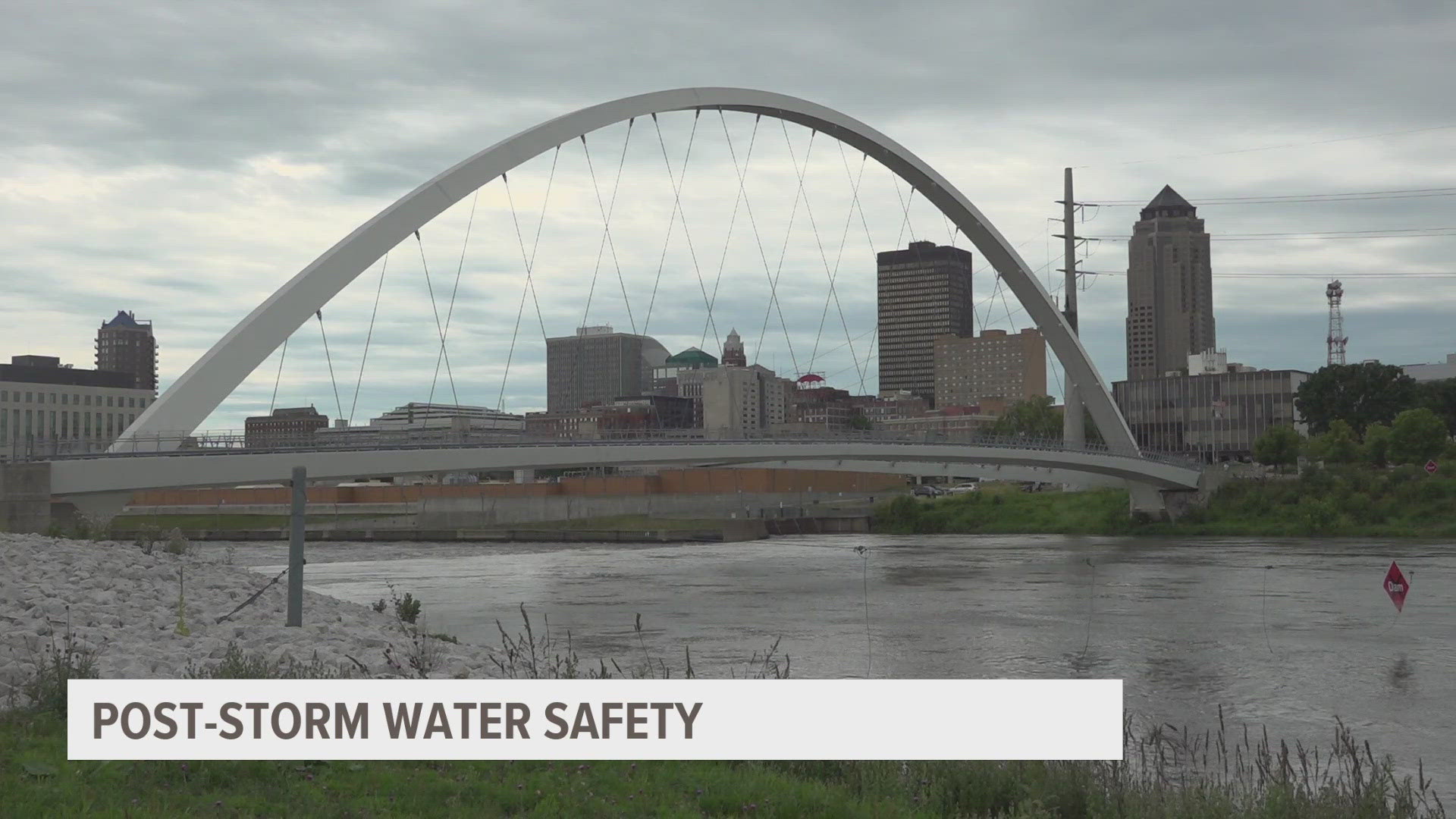DES MOINES, Iowa — For those who enjoy getting out on the water during the Fourth of July, it's encouraged to take safety into consideration. However, now that flood waters are submerging parts of the state, it's adding a new layer of danger.
Those high waters are creating challenges. The Iowa Department of Natural Resources says there have been multiple instances of people getting separated from their boats after tipping over. One person even had to be rescued.
Debris can easily turn deadly for boaters and swimmers. That's a word of advice from the Iowa DNR's River Programs Outreach Coordinator Todd Robertson, who says getting tangled isn’t the only concern.
“When wood starts piling on top of each other, it becomes like a wood coffin. It can suck you in and that’s a place where you can get in a lot of trouble," Robertson said.
He adds that you should never step foot in a river that’s so full the land and water are at equal levels.
“There was 30,000 CFS (Cubic Feet per Second) volume of water coming down the Des Moines River and I’m telling you that is a powerful powerful river and the last thing you want to do is end up in the river," Robertson said.
With or without a flood, Robertson wants anyone in or on top of the water to check the DNR’s interactive paddler’s map for where the lowhead dams are before going out.
RELATED: Flood watch in effect through Tuesday morning for northern and western Iowa, includes Polk County
“You still have re-circulation down below that where the water pours over it. Kind of looks like a waterfall and then it hits the water below it and it causes a washing machine with circulation type turbulence. That's dangerous all the time." Robertson said.
There are multiple ways to figure out whether a body of water is safe to boat in.
“Check the flow rate. Call the county conservation board of that county where that river’s running through. They might be able to give you a real time looksy and kind of tell you how it’s going. Talk to other experienced paddlers," Robertson advised.
You can also call the Iowa DNR for advice. You can find flow rates by going to the United States geological survey site and entering in "Iowa stream flow."
Some places to find experienced paddlers include Facebook paddling groups and retail shops that sell boats. When it comes to the flow rate you should be looking for, Robertson says it depends on your skill level.
He warns swimmers to avoid all rivers. Some lakes, however, are good to go.
Remember rivers change day to day. Robertson says you should be checking the water levels every day you go out. That doesn’t mean every single body of water is a no-go. Be smart and keep these tips in mind. And, of course, wear a life jacket when boating.

